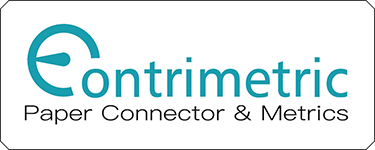Assessment of Traffic-Induced Noise Pollution in Dhaka City: A Case Study of Twenty Urban Locations
DOI:
https://doi.org/10.70028/dcea.v2i2.40Keywords:
Noise Pollution, Traffic Volume, Dhaka City, Sound Pressure Level (SPL), Urban EnvironmentAbstract
This study examines the extent of noise pollution resulting from vehicular traffic across twenty strategically selected commercial and residential locations within Dhaka, Bangladesh. Data collection was conducted during afternoon peak hours (5:00 PM and 8:00 PM) using mobile-based sound meter applications in conjunction with manual classified traffic volume counts. The analysis indicates that noise levels at the majority of surveyed sites exceeded the permissible thresholds established by the World Health Organization. Notably, commercial zones exhibited particularly high average noise levels, reaching up to 76 dB(A), with Technical Mor and Mirpur-10 among the most affected areas. Although residential zones recorded comparatively lower levels, they too surpassed recommended noise standards. A strong positive correlation was identified between traffic volume and elevated sound pressure levels (SPL), emphasizing the critical need for effective urban noise mitigation measures. This paper underscores the importance of implementing updated traffic management policies, enhancing urban green infrastructure, regulating the use of vehicle horns, and fostering public awareness to address the escalating issue of traffic-induced noise pollution in Dhaka.
Downloads
References
J. Khan, M. Ketzel, K. Kakosimos, M. Sørensen, and S. S. Jensen, “Road traffic air and noise pollution exposure assessment – A review of tools and techniques,” Sci. Total Environ., vol. 634, pp. 661–676, Sep. 2018, doi: http://dx.doi.org/10.1016/J.SCITOTENV.2018.03.374
M. Basner et al., “Auditory and non-auditory effects of noise on health,” Lancet, vol. 383, no. 9925, pp. 1325–1332, Apr. 2014, doi: http://dx.doi.org/10.1016/S0140-6736(13)61613-X
M. Lisa Goines, RN, Louis Hagler, “Noise Pollution: A Modern Plague,” South. Med. J., vol. 100, no. 3, pp. 287–294, 2007, doi: http://dx.doi.org/DOI 10.1097/SMJ.0b013e3180318be5.
M. A. Quader, M. M. Rahman, M. A. Chisty, K. Saeed Al Hattawi, E. Alam, and M. K. Islam, “Evaluation of noise pollution impact on health in Dhaka city, Bangladesh,” Front. Public Heal., vol. 12, no. November, pp. 1–14, 2024, doi: http://dx.doi.org/10.3389/fpubh.2024.1477684
R. Lloret-Batlle and J. Zheng, “Jam density and stopbar location estimation with trajectory data at signalized intersections,” Transp. Res. Part B Methodol., vol. 173, pp. 162–175, Jul. 2023, doi: http://dx.doi.org/10.1016/J.TRB.2023.02.007
D. Ouis, “ANNOYANCE FROM ROAD TRAFFIC NOISE: A REVIEW,” J. Environ. Psychol., vol. 21, no. 1, pp. 101–120, Mar. 2001, doi: 10.1006/JEVP.2000.0187
Y. H. Ali et al., “A Review of Traffic Highway Noise Towards Residential Area,” 4th Int. Conf. Curr. Res. Eng. Sci. Appl. ICCRESA 2022, no. December, pp. 19–23, 2022, doi: http://dx.doi.org/10.1109/ICCRESA57091.2022.10352490
P. H. T. Zannin, A. Calixto, F. B. Diniz, and J. A. C. Ferreira, “A survey of urban noise annoyance in a large Brazilian city: the importance of a subjective analysis in conjunction with an objective analysis,” Environ. Impact Assess. Rev., vol. 23, no. 2, pp. 245–255, Mar. 2003, doi: http://dx.doi.org/10.1016/S0195-9255(02)00092-6
A. Fuente and L. Hickson, “Noise-induced hearing loss in Asia,” Int. J. Audiol., vol. 50, no. SUPPL. 1, 2011, doi: http://dx.doi.org/10.3109/14992027.2010.540584
D. Welch, D. Shepherd, K. N. Dirks, and R. Reddy, “Health effects of transport noise,” Transp. Rev., vol. 43, no. 6, pp. 1190–1210, 2023, doi: http://dx.doi.org/10.1080/01441647.2023.2206168
B. Berglund, T. Lindvall, and D. Schwela, “Guidelines for Community Noise. World Health Organization,” Noise & Vibration Worldwide, vol. 31, no. 4. pp. 1–141, 1995. [Online]. Available: http://multi-science.metapress.com/openurl.asp?genre=article&id=doi:10.1260/0957456001497535
A. Barros, J. K. Kampen, and C. Vuye, “Noise barriers as a mitigation measure for highway traffic noise: Empirical evidence from three study cases,” J. Environ. Manage., vol. 367, p. 121963, Sep. 2024, doi: http://dx.doi.org/10.1016/J.JENVMAN.2024.121963
M. Mehrotra, Anupam; Shukla, Sheo Prasad; Shukla, A.K.; Manar, Manish K.; Singh, S.K.; Mehrotra, “A Comprehensive Review of Auditory and Non-Auditory Effects of Noise on Human Health,” Noise Health, vol. 26, no. 121, pp. 59–69, 2024, doi: http://dx.doi.org/10.4103/nah.nah_124_23
T. Münzel, F. P. Schmidt, S. Steven, J. Herzog, A. Daiber, and M. Sørensen, “Environmental Noise and the Cardiovascular System,” J. Am. Coll. Cardiol., vol. 71, no. 6, pp. 688–697, 2018, doi: http://dx.doi.org/10.1016/j.jacc.2017.12.015
M. S. Hammer, T. K. Swinburn, and R. L. Neitzel, “Environmental noise pollution in the United States: Developing an effective public health response,” Environ. Health Perspect., vol. 122, no. 2, pp. 115–119, 2014, doi: http://dx.doi.org/10.1289/ehp.1307272
R. Guski, D. Schreckenberg, and R. Schuemer, “WHO environmental noise guidelines for the European region: A systematic review on environmental noise and annoyance,” Int. J. Environ. Res. Public Health, vol. 14, no. 12, pp. 1–39, 2017, doi: http://dx.doi.org/10.3390/ijerph14121539
P. Wang et al., “Indoor and roadside exposures to traffic noise and cardiovascular mortality and the role of urban environmental stressors across a high-rise, high-density environment: A case study in Hong Kong,” Build. Environ., vol. 229, p. 109945, Feb. 2023, doi: http://dx.doi.org/10.1016/J.BUILDENV.2022.109945
G. Martínez-Vilavella et al., “The effects of exposure to road traffic noise at school on central auditory pathway functional connectivity,” Environ. Res., vol. 226, p. 115574, Jun. 2023, doi: http://dx.doi.org/10.1016/J.ENVRES.2023.115574
W. Yang, J. He, C. He, and M. Cai, “Evaluation of urban traffic noise pollution based on noise maps,” Transp. Res. Part D Transp. Environ., vol. 87, p. 102516, Oct. 2020, doi: http://dx.doi.org/10.1016/J.TRD.2020.102516
U. B. Morawetz, H. A. Klaiber, and H. Zhao, “The impact of traffic noise on the capitalization of public walking area: A hedonic analysis of Vienna, Austria,” J. Environ. Manage., vol. 353, p. 120060, Feb. 2024, doi: http://dx.doi.org/10.1016/J.JENVMAN.2024.120060
H. Nath et al., “Assessment of index-based traffic noise annoyance level at major road intersections in a tourist city: A case study towards environmental sustainability,” Heliyon, vol. 10, no. 21, p. e40005, Nov. 2024, doi: http://dx.doi.org/10.1016/J.HELIYON.2024.E40005
T. Münzel, M. Kuntic, A. Daiber, and M. Sørensen, “Transportation noise and the cardiometabolic risk,” Atherosclerosis, vol. 403, p. 119148, Apr. 2025, doi: http://dx.doi.org/10.1016/J.ATHEROSCLEROSIS.2025.119148
Downloads
Published
Issue
Section
License
Copyright (c) 2025 Abhijit Nath abhi, Rashedul Islam, Md. Mosfiqur Rahman Rafid, Nafi Md. Abrar Kabir (Author)

This work is licensed under a Creative Commons Attribution-NonCommercial 4.0 International License.













